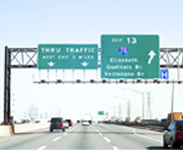Riding With a Sidecar on Your Motorcycle
If you are considering a sidecar, you may be wondering how it feels on the road and how challenging the transition might be. It’s important to appreciate that riding a motorcycle with a sidecar is a lot different than riding your standard two-wheeled motorcycle. The leaning movement is not as effective when riding with the mass of a sidecar. A motorcycle with a sidecar is safe as long as the bike is set up to ride correctly with one. Depending on the model, the sidecar may or may not have a drive wheel. Most add-on kits (for Harley-Davidson, Triumph, Honda, BMW motorcycles and more) do not have a drive wheel. These types of conversions are attached to a two-wheeled motorcycle. In some cases, the motorcycle will have to be modified for the sidecar to be properly installed. Notably, Ural motorcycles do have a two-wheel drive sidecar with reverse. Whether you go with or without a drive wheel will not really change the way you ride the motorcycle. A sidecar with a drive wheel may tend to go in a straight line; one without the drive wheel may be unaffected.
If the sidecar is properly set up, the bike will track straight down the road. Lean against the turns. On right turns, the sidecar will want to rise off the ground, and the rider will want to lean as if there was no sidecar attached. The best method of preventing this is to reduce your speed before coming into a right turn and do not panic or overcorrect when the sidecar begins to rise.
When making left turns, the sidecar can carry more speed. If going too fast the sidecar’s nose will begin to dip and cause the rear wheel of the motorcycle to rise off the ground. Unfortunately, in some situations where speeding up or stopping aggressively is unavoidable, the sidecar will lift from the ground.

It is best to practice riding with a sidecar in order to become acquainted with lifting it off the ground. Practicing in closed courses, beginning slowly and going faster, will help you get used to the weight of the sidecar. When it lifts off the ground while riding on-road, you should be able to adjust on the fly without panicking. An experienced sidecar rider can hold the sidecar in the air with ease. Practicing with weight in the sidecar is a great way to get used to it with the weight of a person. Create a small obstacle course in a closed lot. Riding through and around cones will help prepare for real life situations.
Once the rider has had enough practice and enough confidence, a passenger can join. Sidecars prove to be enjoyable for the passenger since they have a low center of balance and an unobstructed forward view. The passenger should have protective riding gear and know the rules of riding on a motorcycle. They must understand that a sidecar can come off the ground and that they need not panic and overcompensate for their weight. Enjoy these tips for a fun and safe ride for you and your new passenger! Ride safely!
Plymouth Rock Assurance is a marketing name used by a group of separate companies that write and manage property and casualty insurance in multiple states. Motorcycle insurance in New Jersey and Pennsylvania is underwritten by Rider Insurance Company. Each company is financially responsible only for its own insurance products. Actual coverage is subject to the language of the policies as issued by each separate company.





